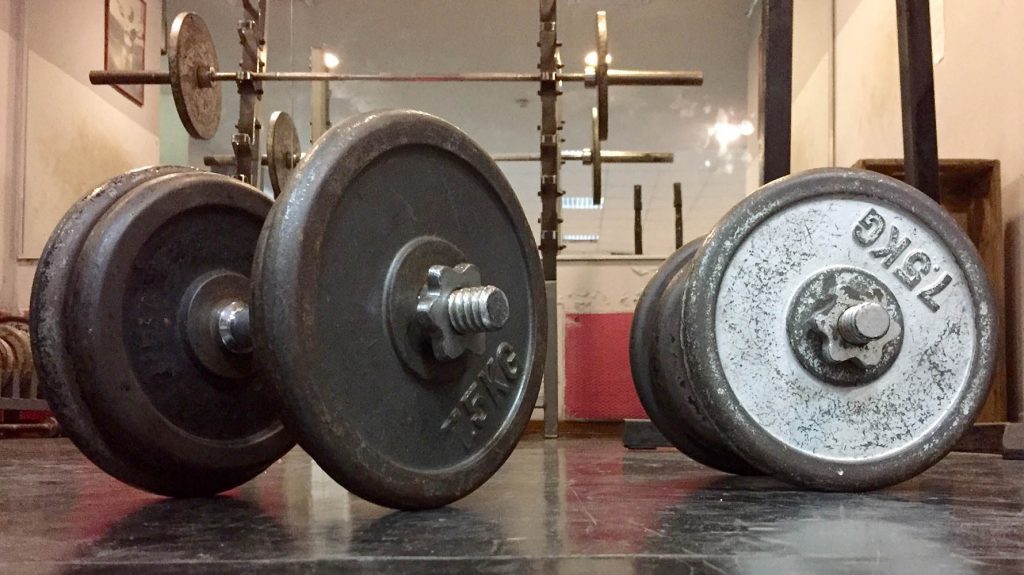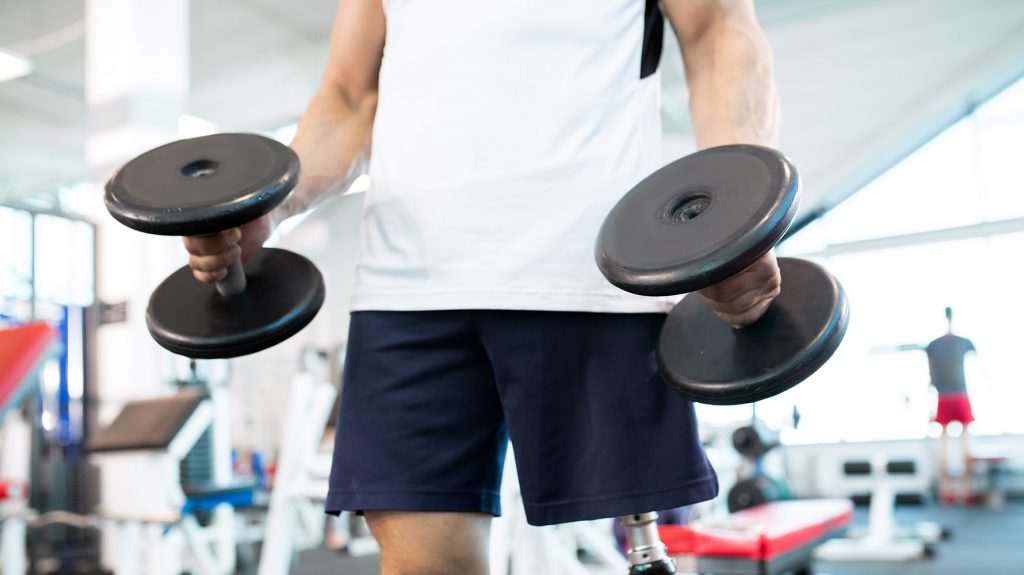Dumbbell Shrugs Exercise: Benefits, Muscles Worked & How to Do

Nothing develops the trapezius muscle as strongly and in isolation as shrugs performed with dumbbells or a barbell. It is impossible to imagine an aesthetic body with a wide back and shoulders without a protruding and embossed trapezoid. On the one hand, the developed muscle complements the athletic silhouette, and on the other, it completely disfigures if it becomes too hypertrophied. Therefore, further we will figure out how to correctly perform this exercise and how to avoid imbalances.
Benefits
Advantages of the shrugs exercise option using dumbbell:
- In isolation and fully contributes to the maximum contraction of the upper part of the trapezius muscle, which, when properly developed, forms the aesthetic appearance of the shoulder girdle both from the front and from other angles.
- Increases muscle strength and prepares you for challenging multi-joint exercises.
- Improves the relief and, if done correctly, improves posture and the condition of the thoracic spine.
- Dumbbell shrugs are much more comfortable and technically simpler than the barbell version, since the lifting of the shoulders occurs strictly in one plane without shifting the axis and involving additional muscles. Dumbbells do not put additional stress on the spine and shoulder joints, as when they are displaced forward with a barbell.
- You can choose any convenient option, both sitting and standing. The sitting option makes it possible to work on the muscle more concentrated and fix the position of the torso.
What Muscles Do Dumbbell Shrugs Work?
- Trapezius muscle (mainly the upper part).
- Rhomboid muscle.
- Muscle that lifts the scapula.
The biceps of the shoulder, the muscles of the forearm and hand work as stabilizers when holding the grip.

How to Do Dumbbell Shrugs?
Standing Dumbbell Shrugs
- Take dumbbells in your hands, place your feet across the width of the pelvis. Place your hands freely along the body, slightly twisting the hand inward.
- As you exhale, lift your shoulders up, contracting the top of your trapezoid for a couple of seconds. Do not bend your elbow joints when lifting your shoulders, do not bring your neck forward and in no case round your back. The axis of the spine remains strictly vertical.
- As you inhale, gently lower the dumbbells down, stretching the trapezoid at the lowest point of amplitude.
Seated Dumbbell Shrugs
In this version, the technique is no different from the previous one. One of the advantages of the sitting position is the reduction of the axial load on the spine. It also excludes the help of additional muscles when swinging.
Incline Bench Dumbbell Shrugs
These two options shift some of the load to the middle and bottom of the trapezius muscle. An important condition for the tilt option is good stabilization of the hull. Here, the movement is similar – the shoulders rise up, but no longer to the ears, but to the ceiling. An incline bench, against which the athlete rests with his stomach, will significantly reduce the load on the spine and prevent swaying.
How Do I Add This Exercise to Workout?
- Shrugs are performed in combination with exercises for the development of the back muscles and their synergists – the biceps. First, basic exercises for the lats are performed, in which the trapezoid is also involved, namely: pull-ups, pull-ups in blocks, simulators and free-weight pulls in the slope. Only at the end of the complex, even if biceps exercises are present in it, dumbbell shrugs are performed.
- For this exercise, you can use a lot of weight, since it primarily provides for the development of the trapezoid in volume, therefore, the number of repetitions will be 10-12. The number of approaches is the same as for the rest of the exercises in the complex: as a rule, 3-4.
Alternatives and Recommendations
- It is impossible to load the trapezium in more detail with any other exercise. The only substitute for the option is barbell shrugs. But their disadvantage is that the amplitude decreases when the arms are moved forward, which makes shrugs with dumbbells the most preferable.
- At home, you can use all kinds of resistance bands, bands, weights, and even water bottles.
- There is also an option called Lee Haney’s thrust, which provides for the development of trapeziums, but more of the lower and middle parts of it.
- We must not forget that the middle and lower parts of the trapeziums work in free-weight rows when the body bends, therefore, it does not make much sense to create additional load on them with the help of isolating exercises (shrugs in the slope).
- In back workouts, it is enough to perform just one of the shrugs options in order to prevent excessive hypertrophy and overstrain of the trapezoid. Unfortunately, it is this muscle that most often suffers from hypertonia and for this it is not at all necessary to be an athlete. Therefore, for symmetrical body development, it is important to strengthen the pectoral muscles using both presses and stretching techniques such as pullovers and dumbbell spreads.
- It is also important to pay attention to stretching the trapezium and neck muscles after each workout in order to prevent their shortening and curvature of the spine.